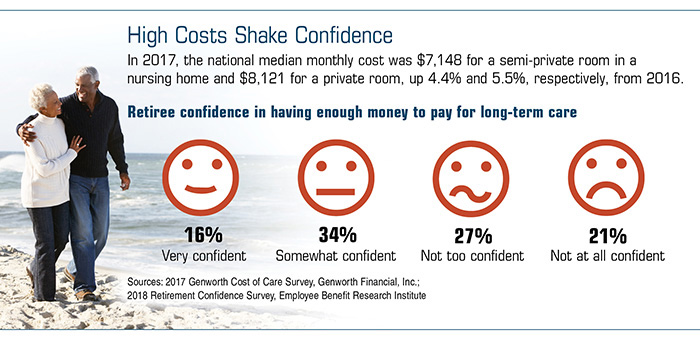Not known Facts About Pacific Prime
The smart Trick of Pacific Prime That Nobody is Discussing
Table of ContentsAbout Pacific PrimeIndicators on Pacific Prime You Need To Know4 Easy Facts About Pacific Prime DescribedThe 2-Minute Rule for Pacific PrimeAn Unbiased View of Pacific Prime

This is due to the fact that the data were collected for a duration of strong economic performance. Of the estimated 42 million people that were uninsured, just about concerning 420,000 (regarding 1 percent) were under 65 years old, the age at which most Americans become qualified for Medicare; 32 million were adults between ages 18 and 65, around 19 percent of all adults in this age group; and 10 million were children under 18 years old, concerning 13.9 percent of all children (Mills, 2000).
These quotes of the variety of individuals without insurance are generated from the annual March Supplement to the Present Populace Survey (CPS), conducted by the Census Bureau. Unless or else noted, national price quotes of individuals without health insurance coverage and percentages of the populace with various kinds of protection are based upon the CPS, the most widely used source of estimates of insurance policy coverage and uninsurance rates.
Pacific Prime Fundamentals Explained

Still, the CPS is specifically useful since it generates annual quotes reasonably promptly, reporting the previous year's insurance coverage estimates each September, and because it is the basis for a regular set of estimates for greater than twenty years, enabling for analysis of fads in protection in time. For these factors, in addition to the substantial use of the CPS in various other research studies of insurance policy protection that exist in this report, we count on CPS price quotes, with restrictions noted.

The estimate of the variety of without insurance individuals broadens when a populace's insurance policy status is tracked for several years. Over a three-year duration starting early in 1993, 72 million people, 29 percent of the united state populace, lacked insurance coverage for a minimum of one month. Within a single year (1994 ), 53 million people experienced at the very least a month without coverage (Bennefield, 1998a)
6 out of every ten without insurance grownups are themselves employed. Functioning does improve the chance that one and one's family participants will have insurance, it is not a guarantee. Even members of family members with two full time breadwinner have nearly a one-in-ten opportunity of being uninsured (9.1 percent uninsured rate) (Hoffman and Pohl, 2000).
Excitement About Pacific Prime
New immigrants represent a significant proportion of individuals without medical insurance. One evaluation has attributed a substantial section of the recent growth in the dimension of the united state without insurance populace to immigrants that arrived in the country between 1994 and 1998 (Camarota and Edwards, 2000). Recent immigrants (those who involved the United States within the previous 4 years) do have a high price of being uninsured (46 percent), however they and their youngsters make up simply 6 percent of those without insurance policy nationally (Holahan et al., 2001).
The relationship between medical insurance and access to care is well developed, as recorded later in this phase. Although the connection between health and wellness insurance and health end results is neither straight nor easy, a substantial professional and wellness solutions study literature links health and wellness insurance coverage to improved access to care, better quality, and improved individual and populace health and wellness status.
Levels of analysis for checking out the effects of uninsurance. This conversation of medical insurance coverage concentrates largely on the united state populace under age 65 because basically all Americans 65 and older have Medicare or various other public insurance coverage. It concentrates specifically on those without any type of health insurance policy for any length of time.
Pacific Prime - An Overview
The problems faced by the underinsured are in some aspects similar to those faced by the without insurance, although they are generally less severe. expat insurance. Uninsurance and underinsurance, nevertheless, entail definitely various plan issues, and the strategies for addressing them may vary. Throughout this study and the five reports to follow, the main focus is on persons without any wellness insurance coverage and thus no aid in paying for healthcare beyond what is readily available through charity and safety and security internet organizations
Medical insurance is an effective factor affecting invoice of treatment because both people and medical professionals respond to the out-of-pocket rate of solutions - https://www.blogtalkradio.com/pacificpr1me. Medical insurance, nonetheless, is neither needed nor sufficient to obtain accessibility to medical reference services. However, the independent and direct impact of medical insurance protection on access to wellness solutions is well developed.
Others will certainly get the health and wellness care they need also without medical insurance, by paying for it expense or seeking it from suppliers who provide treatment free or at very subsidized rates. For still others, health insurance policy alone does not make certain receipt of care due to other nonfinancial barriers, such as a lack of healthcare providers in their area, restricted access to transportation, illiteracy, or etymological and social distinctions.
Pacific Prime Can Be Fun For Anyone
Formal research study regarding without insurance populaces in the United States dates to the late 1920s and early 1930s when the Board on the Cost of Treatment generated a collection of records concerning funding medical professional workplace gos to and hospitalizations. This problem ended up being prominent as the numbers of medically indigent climbed throughout the Great Clinical depression.